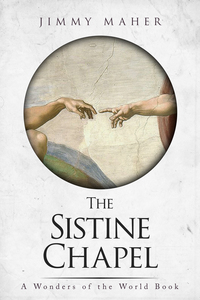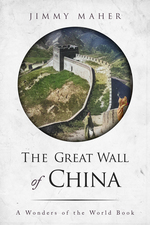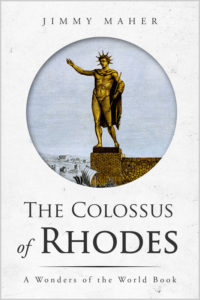The PDP-10 system on which Don Woods completed Adventure was an expensive resource shared by many; Stanford did not purchase it to enable virtual spelunking. Perhaps to head off the inevitable complaints of his superiors, Woods built into the program the concept of “Cave Hours.” If someone tried to play during times of peak demand — by default from 8:00 am to 6:00 pm, excluding weekends and holidays — she was allowed only to take a “short exploration,” limited (by default) to 30 minutes and without the option to save her progress. Some design choices also seem calculated to encourage players to play in shorter sessions over a period of weeks or months rather than binging for hours at a time. For instance, during non-peak periods a player can save her progress, but she is forced to immediately quit the game upon doing so, and cannot restore her session and resume playing for 90 minutes. (Of course, things like this also served, in keeping with the philosophy described in my last post, just to make the game hard.)
These restrictions could be altered by an administrator by entering “MAGIC MODE” at an in-game prompt. If she responds correctly to what follows she becomes a sort of root user, able to change the program’s settings:
MAGIC MODE
ARE YOU A WIZARD?
YES
PROVE IT! SAY THE MAGIC WORD!
DWARF
THAT IS NOT WHAT I THOUGHT IT WAS. DO YOU KNOW WHAT I THOUGHT IT WAS?
NO
NODDG
BMAFH
OH DEAR, YOU REALLY *ARE* A WIZARD! SORRY TO HAVE BOTHERED YOU . . .
DO YOU WISH TO SEE THE HOURS?
YES
Mon - Fri: Open all day
Sat - Sun: Open all day
Holidays: Open all day
DO YOU WISH TO CHANGE THE HOURS?
NO
DO YOU WISH TO (RE)SCHEDULE THE NEXT HOLIDAY?
NO
Length of short game (null to leave at 30):
NEW MAGIC WORD (NULL TO LEAVE UNCHANGED):
NEW MAGIC NUMBER (NULL TO LEAVE UNCHANGED):
Latency for restart (null to leave at 90):
DO YOU WISH TO CHANGE THE MESSAGE OF THE DAY?
NO
OKAY. YOU CAN SAVE THIS VERSION NOW.
BE SURE TO SAVE YOUR CORE-IMAGE...
CPU time 0.01 Elapsed time 33.98
EXIT
The administrator must work out the proper response using a complex cipher algorithm based not only on the randomly chosen sequence of characters the game sends to her but also on the exact current system time. This portion of the source code is obfuscated as much as possible for obvious reasons, although I’m sure the sufficiently determined could work it out. Presumably the algorithm must have been passed secretly among administrators, but this is one aspect of Adventure I’ve never heard too much about. If anyone knows anything more about how this was generally handled, by all means leave a comment to tell us about it.
One interesting aspect of the cave hours system is the way that it treats Adventure not as a narrative or even as a game, but rather as a location — specifically, as a sort of virtual amusement park. The visitor who attempts to enter during peak hours is told, “I’M TERRIBLY SORRY, BUT COLOSSAL CAVE IS CLOSED,” followed by details of its “open hours.” This idea is echoed in the endgame, as the player suddenly finds herself dropped into the control room of this underground park. It all serves to emphasize again that Adventure is ultimately all about location, location, location — and that Don Woods apparently had a bit of an amusement-park fetish.
Whatever its other implications, system administrators would soon have reason to bless Woods for including cave hours, even as they probably cursed him for ever unleashing Adventure upon them in the first place. Because, you see, Adventure turned out to be popular — really, really popular. Solving it became the obsession of hackers across the country and, eventually, all over the world; legend has it that IT departments and university computer-science departments pretty much stopped doing much of anything else until they had won. Even disallowing play during business hours is after all of limited utility when all of the people who are supposed to be accomplishing useful things during said business hours are passed out at their desks after playing Adventure all night. One apocryphal quote claims that Adventure set the entire computing industry back by two weeks.
And once that crisis was passed, lots of hackers in lots of places promptly started trying to make their own versions. Adventure-like games became Adventure games became adventure games, and a genre was born. For several years the most complex examples of the new form continued to appear on larger institutional systems in places like MIT University, the Stockholm Computer Center, and Cambridge University. Jason Dyer has been doing a great job of covering that aspect of early adventure gaming, digging into some largely forgotten works as well as the heavy hitters like Zork. At least for now, though — and, as always, as time permits — I want to look at how the innovations of Crowther and Woods, not to mention those of Gregory Yob and Don Rawitsch and so many others, began to come home, on the first practical home computers that were appearing at the same time that Adventure was paralyzing the world of the institutional computer.
Before I say goodbye to Adventure, here’s a final tally of who created what.
Crowther:
basic concept of the text adventure
compass directions
the dwarves
“Maze of Twisty Little Passages, all alike”
geography and some puzzles up to the “Complex Junction”
Woods:
inventory limit
“Maze of Twisty Little Passages, all different”
cave hours
geography and puzzles from the “Complex Junction”
scoring system
save system
the pirate
limited lamp battery life
You have a lot to answer for, Don Woods! But we love you anyway… at least you didn’t implement any hunger timers.









